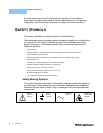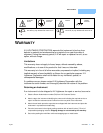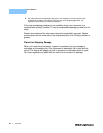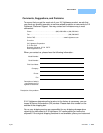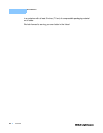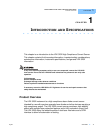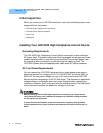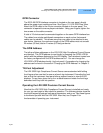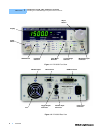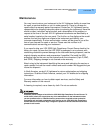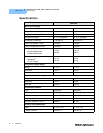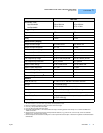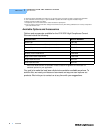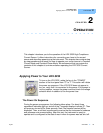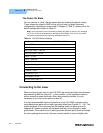
INTRODUCTION AND SPECIFICATIONS
Installing Your LDX-3232 High Compliance Current Source
04_06 LDX-3232 3
CHAPTER 1
GPIB Connector
The IEEE 488 GPIB interface connector is located on the rear panel, directly
above the power input module and fuse. See Figure 1.2, LDX-3232 Rear View.
Attach the GPIB cable to the 24-pin connector located on the rear panel. The
connector is tapered to ensure proper orientation. Using your fingers, tighten the
two screws on the cable connector.
A total of 15 devices can be connected together on the same GPIB interface bus.
The cables have single male/female connectors on each end so that several
cables can be stacked. This allows more than one cable to be attached to any
one device. However, the maximum length of the GPIB cables must not exceed
20 meters (65 feet) total or 2 meters (6.5 feet) per device.
The GPIB Address
The talk and listen addresses on the LDX-3232 High Compliance Current Source
are identical. This GPIB address is read locally by pressing the (GPIB) LOCAL
switch with the address displayed on the LED display. The instrument comes from
the factory configured with the GPIB address set to 1. You can change the
LDX-3232's GPIB address locally (via front panel). A procedure for changing the
address can be found in the section "Changing the GPIB Address" in Chapter 3.
Tilt-Foot Adjustment
The LDX-3232 High Compliance Current Source comes standard with folding
front legs and two rear feet for use as a bench top instrument. Extending the front
feet so that the instrument front panel sits up makes it easier to view the LED
displays. To use them, place the unit on a stable base and rotate the front legs
downward until they lock into position.
Operating the LDX-3232 Precision Current Source
Now that the LDX-3232 High Compliance Current Source is installed and ready
for use, you can begin to learn about its operation. The following photos show the
functional keypad groupings, back panel connectors, and so on. Use these figures
to familiarize yourself with the LDX-3232. After that, use Chapter 2 for
fundamentals of operating your instrument.




